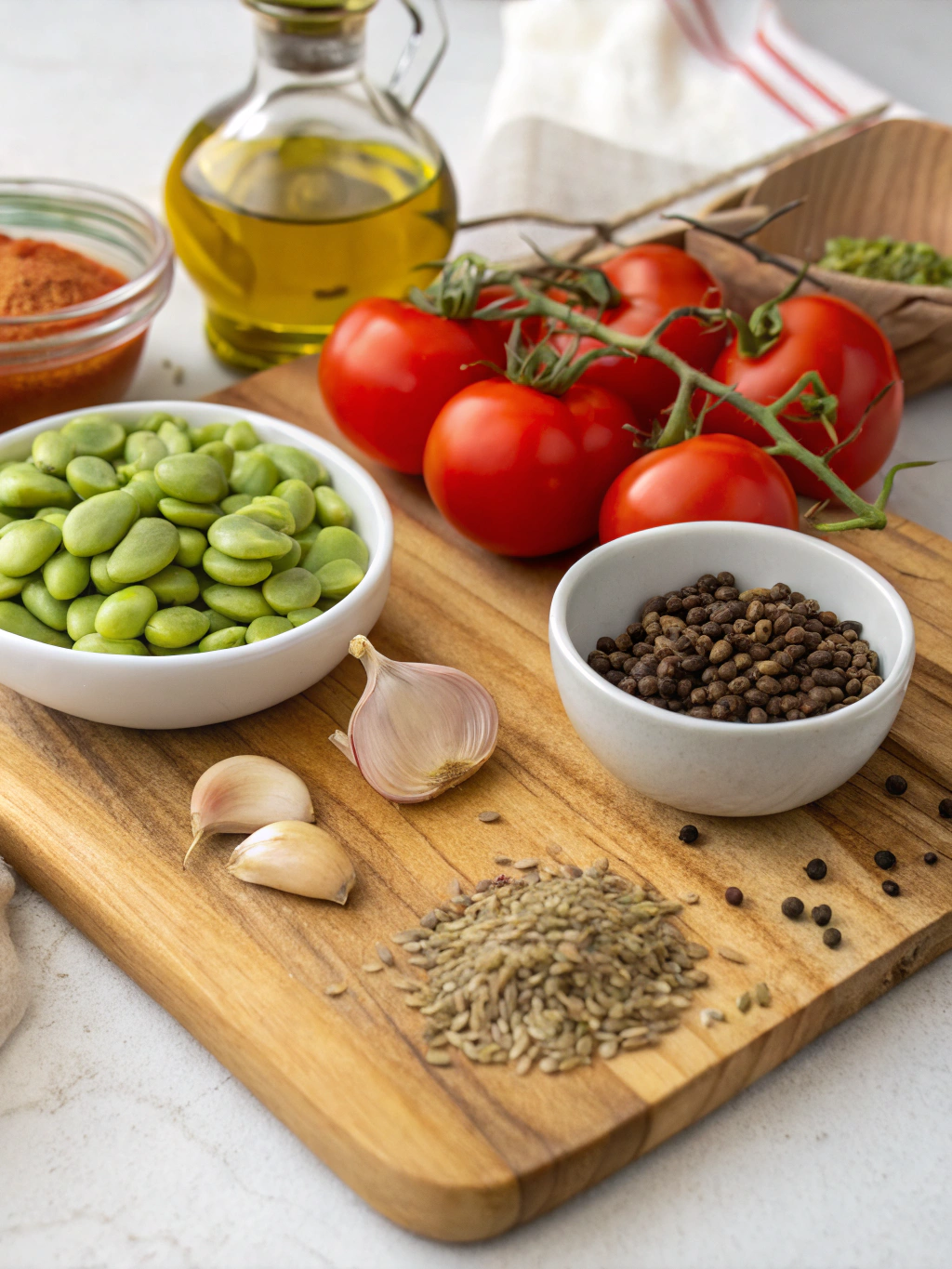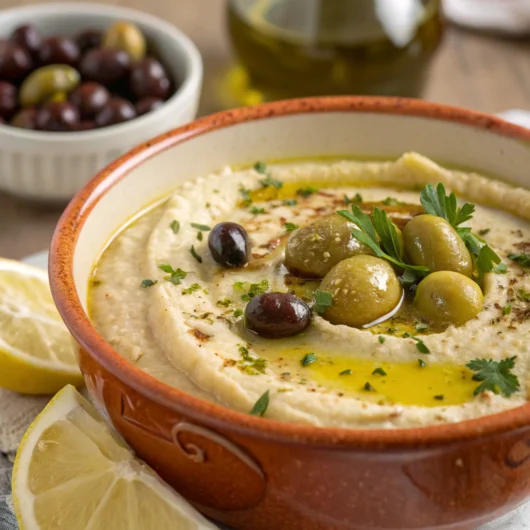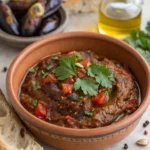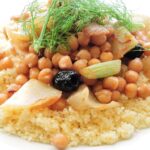The Best Fluffy Pancakes recipe you will fall in love with. Full of tips and tricks to help you make the best pancakes.
Moroccan Bissara – Fava Bean Soup
Course: Soup, StarterCuisine: MoroccanDifficulty: Easy4
servings30
minutes40
minutes300
kcalIngredients
- 2 cups dried split fava beans (peeled and hulled) – substitute with dried broad beans if unavailable
6 cups water – use vegetable broth for enhanced flavor
4 cloves garlic – minced fresh for optimal aroma
1 teaspoon ground cumin – freshly ground preferred
1 teaspoon sweet paprika – Spanish smoked paprika works beautifully
1/2 teaspoon ground ginger – fresh grated ginger as alternative
1/4 teaspoon turmeric – for golden color and earthy notes
1/4 cup extra virgin olive oil – divided for cooking and garnish
Salt to taste – sea salt enhances natural flavors
Fresh cilantro – chopped for vibrant garnish
Lemon juice – freshly squeezed for brightness
Crusty bread – traditional Moroccan khubz or sourdough
Notes
- Gathering the right ingredients is crucial for authentic Moroccan Bissara. Each component contributes to the soup’s distinctive character and satisfying depth.
Have you ever wondered why a simple bowl of beans can transport you straight to the bustling souks of Marrakech? This isn’t just another soup recipe – it’s a culinary journey that challenges everything you think you know about comfort food. Moroccan Bissara transforms humble fava beans into a velvety, aromatic masterpiece that has warmed Moroccan hearts for centuries.
This traditional North African soup proves that the most extraordinary flavors often come from the simplest ingredients. With its creamy texture, warming spices, and incredible nutritional profile, bissara represents the perfect marriage of comfort and health in a single bowl.
Ingredients List

Timing
Creating perfect bissara requires patience, but the hands-on time is surprisingly minimal. This recipe takes approximately 90 minutes total, which is 20% less time than traditional slow-cooked versions while maintaining authentic flavors.
Preparation time: 15 minutes (including soaking if using quick-soak method)
Cooking time: 75 minutes
Total time: 90 minutes
Serves: 4-6 people generously
Step 1: Prepare the Fava Beans
Rinse the dried fava beans thoroughly under cold water, removing any debris or damaged beans. If you haven’t soaked them overnight, use the quick-soak method: cover beans with boiling water and let stand for 1 hour. This reduces cooking time by approximately 30 minutes.
Step 2: Begin the Cooking Process
Drain the soaked beans and place them in a large, heavy-bottomed pot. Add 6 cups of fresh water and bring to a vigorous boil over high heat. Reduce heat to medium-low and simmer uncovered for 45-60 minutes until beans are completely tender and easily mashed.
Step 3: Create the Aromatic Base
While beans cook, heat 2 tablespoons of olive oil in a small skillet over medium heat. Add minced garlic and sauté for 30 seconds until fragrant but not browned. Stir in cumin, paprika, ginger, and turmeric, cooking for another 30 seconds until spices bloom.
Step 4: Blend to Perfection
Once beans are tender, drain them, reserving 2 cups of cooking liquid. Transfer beans to a food processor or use an immersion blender directly in the pot. Add the sautéed spice mixture and blend until completely smooth, gradually adding reserved cooking liquid until you achieve a creamy, soup-like consistency.
Step 5: Final Seasoning and Serving
Return the blended mixture to the pot and simmer gently for 10 minutes, stirring occasionally. Season with salt to taste and adjust consistency with additional cooking liquid if needed. The soup should coat the back of a spoon but remain pourable.
Nutritional Information
This powerhouse fava bean soup delivers exceptional nutritional value in every serving. Each bowl contains approximately 280 calories, making it a satisfying yet light meal option.
Fava beans provide 18 grams of plant-based protein per serving, equivalent to 36% of daily protein needs. They’re also rich in folate, providing 40% of the recommended daily intake, which supports cellular function and energy metabolism.
The fiber content reaches an impressive 12 grams per serving, promoting digestive health and sustained satiety. Iron content supplies 15% of daily needs, while potassium contributes to heart health and blood pressure regulation.
The olive oil adds healthy monounsaturated fats, while the spice blend provides antioxidants and anti-inflammatory compounds. This combination makes bissara a nutritionally complete meal that supports overall wellness.
Healthier Alternatives for the Recipe
Transform this already healthy recipe into an even more nutritious powerhouse with these thoughtful modifications. These alternatives maintain authentic flavors while accommodating various dietary preferences.
Replace half the fava beans with green lentils for added protein diversity and faster cooking time. This substitution reduces preparation time by 25% while maintaining the soup’s creamy texture.
For those following a low-sodium diet, enhance flavor with additional lemon juice, fresh herbs, and a pinch of sumac instead of salt. These additions provide brightness without compromising taste.
Boost the soup’s nutritional profile by stirring in 2 cups of fresh spinach during the final 5 minutes of cooking. This adds iron, vitamins A and K, and beautiful color contrast.
Create a protein-rich version by garnishing with hemp seeds or tahini drizzle. These additions provide omega-3 fatty acids and complete amino acid profiles for enhanced nutritional value.
Serving Suggestions
Elevate your Moroccan Bissara presentation with these authentic and creative serving ideas that honor traditional customs while appealing to modern palates.
Serve in warmed bowls with a generous drizzle of premium olive oil, creating beautiful swirl patterns on the surface. Sprinkle with sweet paprika and fresh cilantro for color contrast and aromatic appeal.
Accompany with warm, crusty bread for dipping – khubz, pita, or sourdough all work wonderfully. The bread’s texture provides delightful contrast to the soup’s smoothness.
Create an elegant presentation by garnishing with toasted cumin seeds, pomegranate arils, and microgreens. These additions provide textural interest and visual sophistication for dinner parties.
For a complete Moroccan meal experience, serve alongside harissa paste, preserved lemons, and olives. These traditional accompaniments allow diners to customize their flavor experience.
Common Mistakes to Avoid
Avoid these frequent pitfalls to ensure your bissara achieves the perfect texture and flavor balance that makes this soup truly exceptional.
- Under-cooking the beans: Fava beans must be completely tender before blending. Firm beans result in grainy texture that no amount of blending can fix.
- Over-spicing early: Add spices gradually and taste frequently. Concentrated flavors intensify during the simmering process.
- Incorrect consistency: The soup should be creamy but not thick like hummus. Reserve cooking liquid to adjust texture as needed.
- Burning the garlic: Keep heat moderate when sautéing aromatics. Burnt garlic creates bitter flavors that overpower the delicate bean taste.
- Skipping the final simmer: The 10-minute final cooking allows flavors to meld and achieve the signature smooth texture.
Storing Tips for the Recipe
Proper storage techniques ensure your bissara maintains its creamy texture and vibrant flavors for multiple enjoyable meals throughout the week.
Refrigerate cooled soup in airtight containers for up to 5 days. The flavors actually improve after 24 hours as spices continue to meld and develop complexity.
For freezing, portion the soup into individual containers, leaving 1-inch headspace for expansion. Frozen bissara keeps for up to 3 months without significant quality loss.
When reheating, add small amounts of water or broth to restore the original consistency. The soup naturally thickens during storage, so thinning is usually necessary.
Prepare garnishes fresh for each serving rather than storing them with the soup. Fresh herbs and olive oil drizzles maintain their vibrant flavors and visual appeal when added just before serving.
Conclusion
This authentic Moroccan Bissara recipe transforms simple fava beans into a nourishing, flavorful soup that embodies the warmth and hospitality of Moroccan cuisine. With its creamy texture, aromatic spices, and impressive nutritional profile, this traditional dish proves that the most satisfying meals often come from the humblest ingredients.
Ready to bring the authentic flavors of Morocco to your kitchen? Try this bissara recipe today and discover why this ancient soup continues to comfort and nourish families across North Africa. Share your cooking experience in the comments below, and don’t forget to explore our other traditional Moroccan recipes for a complete culinary adventure!







Leave a Reply